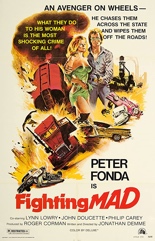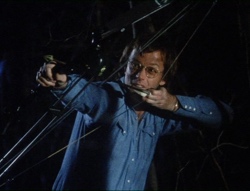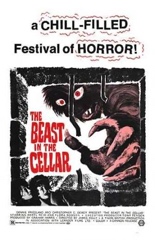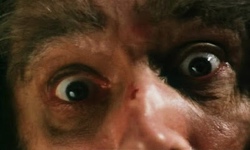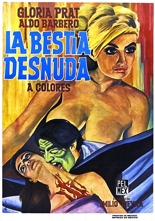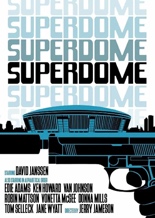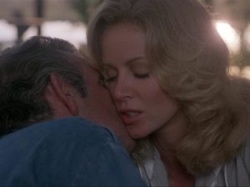
 Whereas the Hi-8: Horror Independent Eight shot-on-video anthology was a mixed bag, its sequel, Hi-Death, is start-to-finish consistent. Unfortunately, that means it’s awash in tedium. Among its five directors, most of them giants in the SOV world, not even the otherwise reliable Tim Ritter (Killing Spree) is able to satisfy.
Whereas the Hi-8: Horror Independent Eight shot-on-video anthology was a mixed bag, its sequel, Hi-Death, is start-to-finish consistent. Unfortunately, that means it’s awash in tedium. Among its five directors, most of them giants in the SOV world, not even the otherwise reliable Tim Ritter (Killing Spree) is able to satisfy.
Part of the problem is Hi-8’s story count has been reduced from seven to five, yet Hi-Death runs a few minutes longer. This time, the wraparound follows two L.A. tourists (Kristen Adams and Kate Durocher) as they spontaneously embark on a “Terror Tour” of Hollywood. They’re led to the next landmark after watching a video, so naturally, what they see, we see — only without the reward.
 In “Death Has a Conscience,” from Sodomaniac’s Anthony Catanese, a junkie (Jensen Jacobs, Miss December) rides out her heroin high at a fleabag motel, and acquires a few, um, very temporary roommates. Amanda Payton’s “Night Drop” shows what happens to a video store’s new employee (Christopher Preyer, Clownado) on his first night closing up shop. True to its retro setting, tried-and-true jump scares are involved.
In “Death Has a Conscience,” from Sodomaniac’s Anthony Catanese, a junkie (Jensen Jacobs, Miss December) rides out her heroin high at a fleabag motel, and acquires a few, um, very temporary roommates. Amanda Payton’s “Night Drop” shows what happens to a video store’s new employee (Christopher Preyer, Clownado) on his first night closing up shop. True to its retro setting, tried-and-true jump scares are involved.
The aforementioned Ritter’s “Dealers of Death” concerns a serial killer known as the Switchblade Bandit (Todd Martin, Earth Girls Are Sleazy), who gets off collecting other serial killers’ memorabilia. While the Bandit’s dialogue elicits a few laughs, the segment suffers greatly from the same problem as the remaining four: being painfully overlong. No piece has enough story to fill its allotted time — perhaps unavoidable with fewer stories this go-round — so scenes either are drawn out or run in circles.
 The final two tales are the worst offenders; incidentally, both are about tortured artists. The whatta-named Fabiana Formica (Cemetery Man) delivers a fine performance as an auditioning actress up against a bullying director (Jay Sosnicki, Dolly Deadly) in “Cold Read,” from Camp Blood series impresario Brad Sykes. Finally, Zombie Bloodbath trilogy creator Todd Sheets turns in “The Muse,” about a crazed painter (Nick Randol, Dreaming Purple Neon) struggling to work with quite a unique patron.
The final two tales are the worst offenders; incidentally, both are about tortured artists. The whatta-named Fabiana Formica (Cemetery Man) delivers a fine performance as an auditioning actress up against a bullying director (Jay Sosnicki, Dolly Deadly) in “Cold Read,” from Camp Blood series impresario Brad Sykes. Finally, Zombie Bloodbath trilogy creator Todd Sheets turns in “The Muse,” about a crazed painter (Nick Randol, Dreaming Purple Neon) struggling to work with quite a unique patron.
The passion each filmmaker (videographer?) holds for horror shines big and bright — perhaps too much, since the overall emphasis seems to be on effects than effectiveness. On that note of practicality, they succeed in demonstrating remarkable ingenuity under an edict that bans CGI and green screens. I only wish the results were more fun. —Rod Lott


